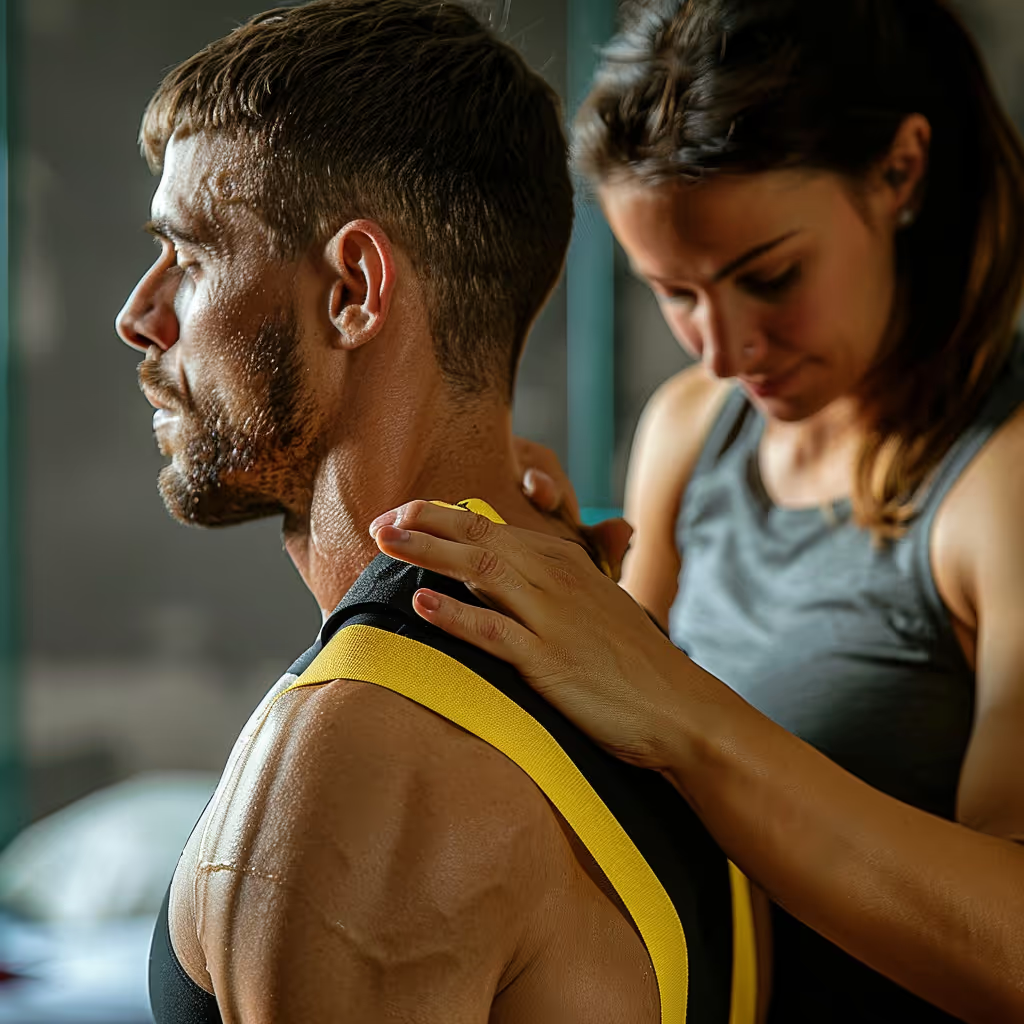Hallux Valgus
It's a deformity of the big toe (the hallux) towards the 2nd toe.
Synonyms for hallux valgus
- Onion
What is hallux valgus?
It's a deformity of the big toe (the hallux) towards the 2nd toe.
What causes hallux valgus?
Hallux valgus can be caused by the following:
- A previous injury to the big toe joint, such as a fracture or sprain
- Genetics (that's the way we're built)
- A lifetime of wearing shoes that don't respect the shape of your foot
- Osteoarthritis of the toe joint
What are the symptoms of hallux valgus?
Most people with hallux valgus have absolutely no symptoms.
On the other hand, some people may develop symptoms such as :
- Pain in the big toe joint
- Pain is increased by :
- Move the toe up or down at the end of mobility
- Walking for long periods.
- Running
- In some cases, there may be swelling, redness and heat at the base of the big toe if there has been a recent overload.
How is hallux valgus diagnosed?
Diagnosis is possible through a review of your symptom history and a clinical examination.
When should you seek physiotherapy for hallux valgus?
You should consult a physiotherapist if you have symptoms as described above or if your doctor has already ruled out any other cause that may be responsible for your pain.
You do not need to see a doctor before consulting a physiotherapist. If your condition requires you to see a doctor, your physiotherapist will be able to tell you.
You can also consult a physiotherapist for advice and exercises to improve the mobility of your big toe if you notice a loss of flexibility in your toe.
What physiotherapy treatments are available for hallux valgus?
Your physiotherapist will perform a detailed assessment to determine the precise cause of your pain. The cause can be different from one person to another, and it's not necessarily the deformity of the toe that's causing your pain.
Your physiotherapist will assess the following:
- Your joint mobility
- The gliding of your nerves
- The quality of your movements
- Your strength and stability
Based on the assessment results, your physiotherapist will:
- Mobilize your toe to reduce pain and improve movement.
- You will be given specific exercises to re-educate the strength and stabilization of the foot and toe.
- Give you specific exercises to learn how to properly control your movements.
- Teach you how to properly manage your daily activities and hobbies to optimize healing
- Give you advice for your posture and movements.
Do I need surgery to correct my hallux valgus?
There are two parts to the answer to this question:
1- If you have no symptoms: surgery to correct toe aesthetics is strongly discouraged . This type of surgery can cause pain afterwards.
2- If you have symptoms:surgery should be the last resort. You should always start with several weeks or even months of physiotherapy with exercises. In some cases, when hallux valgus is caused by a more severe or advanced pathology, surgery may be considered.
What to do at home for hallux valgus?
If you have symptoms, reduce the amount of time you spend doing the activities that cause too much pain temporarily, and gradually resume doing them afterwards.
Here are some tips that may help:
- Wear less narrow shoes that don't force your big toe towards your 2nd toe.
- Stretch your big toe upwards several times a day without causing pain.
- Avoid wearing high heels if they cause more pain
- Try activities that don't put too much stress on your big toes, such as cycling or swimming.
If you don't see any improvement after 10 days, you should consult a physiotherapist.
If you are a runner, refer to the blog post on running (link to come) for concrete tips for running.
To learn more...
You can listen to the podcast PARLE-MOI DE SANTÉ created by one of our physiotherapists, Alexis Gougeon.
Episode #1 discusses the prevention and treatment of running injuries.
Find the episode on YouTube:
Click below to listen to episodes on podcast platforms:

(4).png)
Sources
- Fraissler L, Konrads C, Hoberg M, Rudert M, Walcher M. Treatment of hallux valgus deformity. EFORT open reviews. 2016 Aug;1(8):295-302.
- Wülker N, Mittag F. The treatment of hallux valgus. Deutsches Ärzteblatt International. 2012 Dec;109(49):857.
- Hamid KS, Parekh SG. Clinical presentation and management of hallux rigidus. Foot and ankle clinics. 2015 Sep 1;20(3):391-9.
Videos in this category
Other conditions
Hip osteoarthritis is a normal wear and tear of the hip joint. Osteoarthritis is often described as the wearing away of cartilage between our bones. While this is true, it involves more than just cartilage. Cartilage is a tissue that acts like a cushion between the surfaces of our bones, allowing our joints to glide smoothly and move with ease.
It is a normal wear and tear of the knee joint. Osteoarthritis is often described as the wearing away of cartilage between our bones. While this is true, it involves more than just cartilage. Cartilage is a tissue that acts like a cushion between the surfaces of our bones, allowing our joints to glide smoothly and move with ease.
It is a normal wear and tear of the joints in the lower back vertebrae. Osteoarthritis is often described as the wearing away of cartilage between our vertebrae. While this is true, it involves more than just cartilage. Cartilage is a tissue that acts like a cushion between the surfaces of our vertebrae, allowing them to glide smoothly and move with ease.
A bursa is like a small, very thin, fluid-filled sac found in several joints throughout the body. This small sac acts as a cushion in the joint and lubricates structures that are exposed to more friction.
It is an inflammation of the subacromial bursa in the shoulder joint.
It is a tissue that surrounds the shoulder and allows the shoulder bone to stay in place within the joint. The capsule helps to stabilize the joint.
Cervicalgia is a general term to describe neck pain that does not have a specific cause, such as an accident or sudden movement. Cervicalgia is therefore synonymous with ''I have a pain in my neck and nothing in particular happened''.
In both injuries, there is pain felt in the neck that then radiates into the arm, or vice versa.
It is a significant stretch or tear of the muscle fibers in the groin or inner thigh muscles.
It is a significant stretch or tear of the muscle fibers in the hamstring muscles located at the back of the thigh.
This is a significant stretch or tear of the muscle fibers in the calf muscles (soleus and gastrocnemius).
This is a significant stretch or tear of the muscle fibers in the quadriceps, which is the large muscle at the front of the thigh.
Book an appointment now
We offer a triple quality guarantee: optimized time, double physiotherapy assessment, and ongoing expertise for effective care tailored to your needs.


Our clients' satisfaction is our priority.
At Physioactif, excellence defines our approach. But don't take our word for it, see what our patients are saying.
Discover our physiotherapy clinics
We have multiple locations to better serve you.
Blainville
190 Chem. du Bas-de-Sainte-Thérèse Bureau 110,
Blainville, Quebec
J7B 1A7
Laval
Montreal
St-Eustache
Vaudreuil
21 Cité-des-Jeunes Blvd. Suite 240,
Vaudreuil-Dorion, Quebec
J7V 0N3
Book an appointment now

